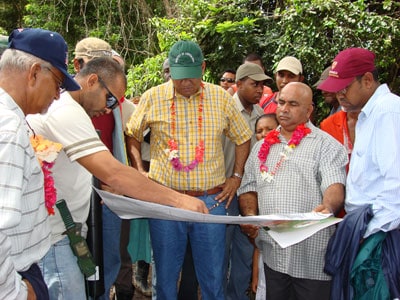
No doubt tired of my whining, Sharon gently threw down the gauntlet — “what you would do if you were Chief for a Year to make things better.” Friday seems a good time to nibble at the bait.
I’d start my tenure by listening to Forest Service leaders. In 2004, Jim Kennedy (Utah State University), Richard Haynes (FS economist) and Xiaoping Zhou (PNW research forester) surveyed line officers gathered at the third National Forest Supervisors’ Conference. The officers ranked the “operational values” they believe the Forest Service rewards, followed by a ranking of the values that participants believe should be rewarded. Most rewarded, in practice, are (1) teamwork, (2) agency loyalty, (3) meeting targets, (4) professional competency, (5) hard work, and (6) promoting a good FS image. What should be most rewarded, the leaders say, are (1) care for ecosystems, (2) professional competency, (3) consensus building, (4) care for employee development, (5) responsiveness to local publics, and (6) concern for future generations.
These results suggest that line officers believe the Forest Service rewards loyalty to the organization, e.g., loyalty to the team, agency, and targets. Kennedy calls this “dog” loyalty: “Dog-loyalty is direct, unswerving, immediate loyalty to the master, that is, the boss or the agency.” Kennedy, J. and Thomas, J.W., “Exit, Voice, and Loyalty of Wildlife Biologists in Public Natural Resource/Environmental Agencies,” in Mangun, W.R. (ed), American fish and wildlife policy, the human dimension. In contrast, many of the values line officers want rewarded (care for ecosystems, consensus building, responsiveness to local publics and concern for future generations), exemplify “cat loyalty” – “a less master-oriented, broader, and more diverse loyalty to the household” – in other words, loyalty to the agency’s mission.
My first priority as Chief would be to work against the bureaucracy’s natural dog-loyal tendencies by pushing cat-loyal practices. Here’s a modest forest planning example.
Has anyone not used the web to find out how others rate a product, like a new car, book, or bicycle (after much research, my new racing machine is a Cannondale CAAD9)? So how about an on-line rating system for forest plans available to those implementing the plans (FS employees), those working on the national forest (contractors, special-use permittees, local governments), and everyone else (visitors)? Here are some rating questions (scale 1-5 with room for comments):
Does the forest plan help you do your job?
Is the plan easy to understand?
Does the plan tell you what you want to know?
A “dog loyal” organization might ask these questions, but would make sure that the answers are hard to find, hidden away in agency files. Cat-loyalists seek transparency because they want to improve their agency’s mission performance (“Caring for the land and serving people”), even at the risk of offending internal vested interests.
So what would you do as Chief?
 Following up on last weekend’s post.. on 21st Century Problems. Here’s two from this weekend’s news.
Following up on last weekend’s post.. on 21st Century Problems. Here’s two from this weekend’s news.






